I thought I’d post an AAR from game I umpired using the “Through the Mud and the Blood” World War One rules on Saturday. I hope you like it.
The game was held in the Salvation Army Hall in Burton-on-Trent in England, and was part of a full day of gaming using the TwoFatLardies rulesets, with other games being played being “Terrible Sharpe Sword”, the American Civil War follow up to “Sharpe Practice”, and “I Ain’t Been Shot, Mum”, the Lardies’ World War Two rules. Simon Gaudin from Burton had organised the games and had invited about twenty or so of his friends drawn from across the Midlands and North of England.
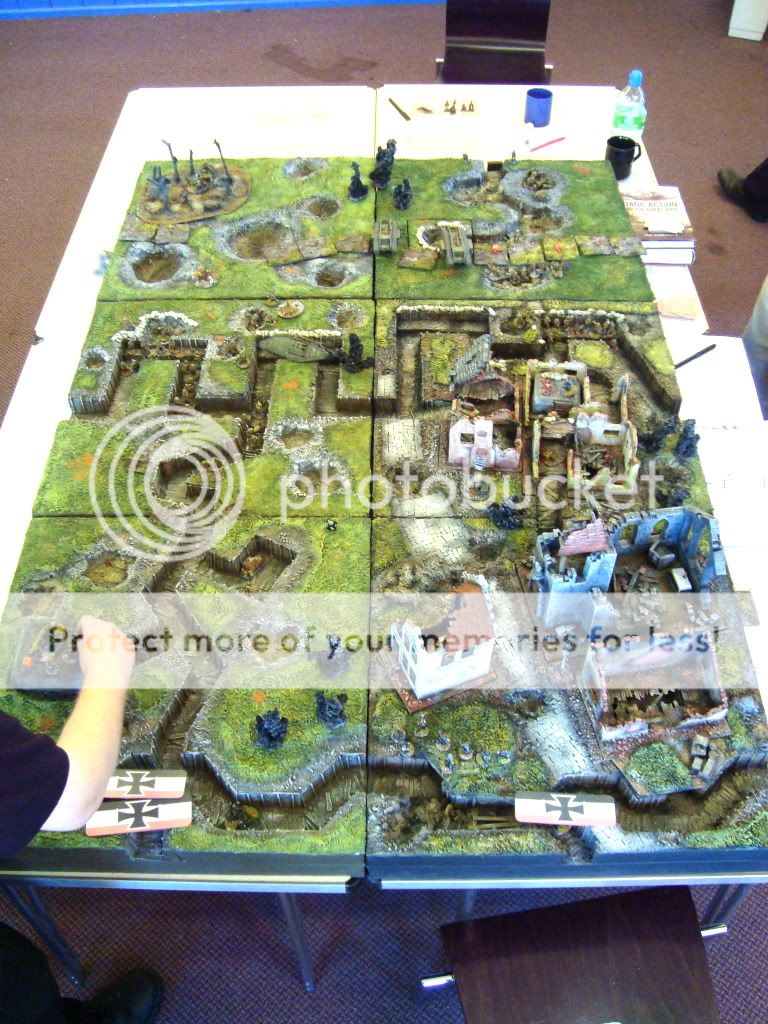
I’d brought up 6 of my terrain boards to run a scenario loosely based on some actions in first couple of days of the Battle of Cambrai in November 1917. My local club in St Albans had run the scenario before about half a dozen times, although on a larger table of 12 terrain boards.
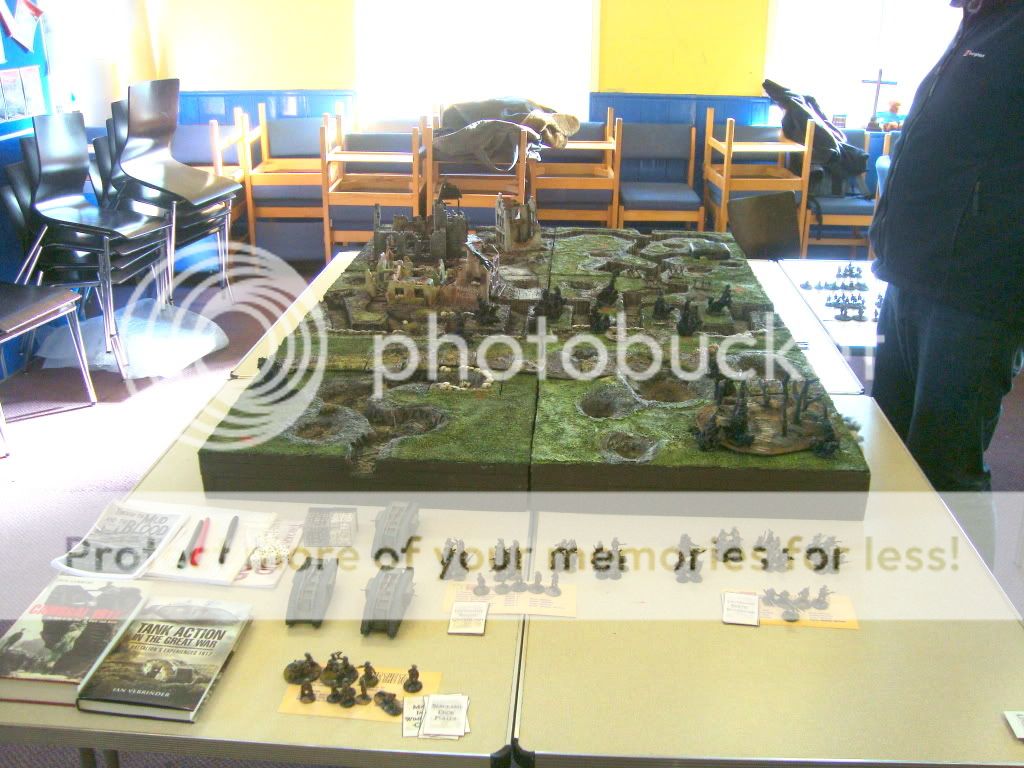
I’d called the scenario “A Greenhouse in a Hailstorm”, the quotation taken from the letter of a tank crewman who was attacking Bourlon village with one of the British tank battalions. It does not take much to imagine how he arrived at that description, with his tank being peppered by armour-piercing ammunition on the slow trundle up to the enemy held buildings in Bourlon village.
I wanted to try an recreate some of the fighting which was seen in villages like Fontaine, Bourlon and Flesquieres in the early stages of the battle and which is vividly described in the excellent books “Cambrai 1917” by Bryn Hammond, “Tank Action in the Great War” by Ian Verrinder and “A Wood Called Bourlon: The Cover-Up After Cambrai, 1917” by William Moore. Rather than pushing the tanks into the village without the support of infantry forces (which ended fairly disastrously on 23 November at Fontaine for the forces of “B” battalion of the Tank Corps), I allowed the attacking British forces a couple of standard British platoons in close support of a section of Mark IV tanks, two of which were Male and one Female.
The British players, Craig and Mike, were given a couple of rounds of opening bombardment to try and catch the defending German forces and dislocate the defences before the assault began in earnest. They were also allowed a later supporting bombardment as a “box barrage” to forestall or disrupt any German reinforcements.
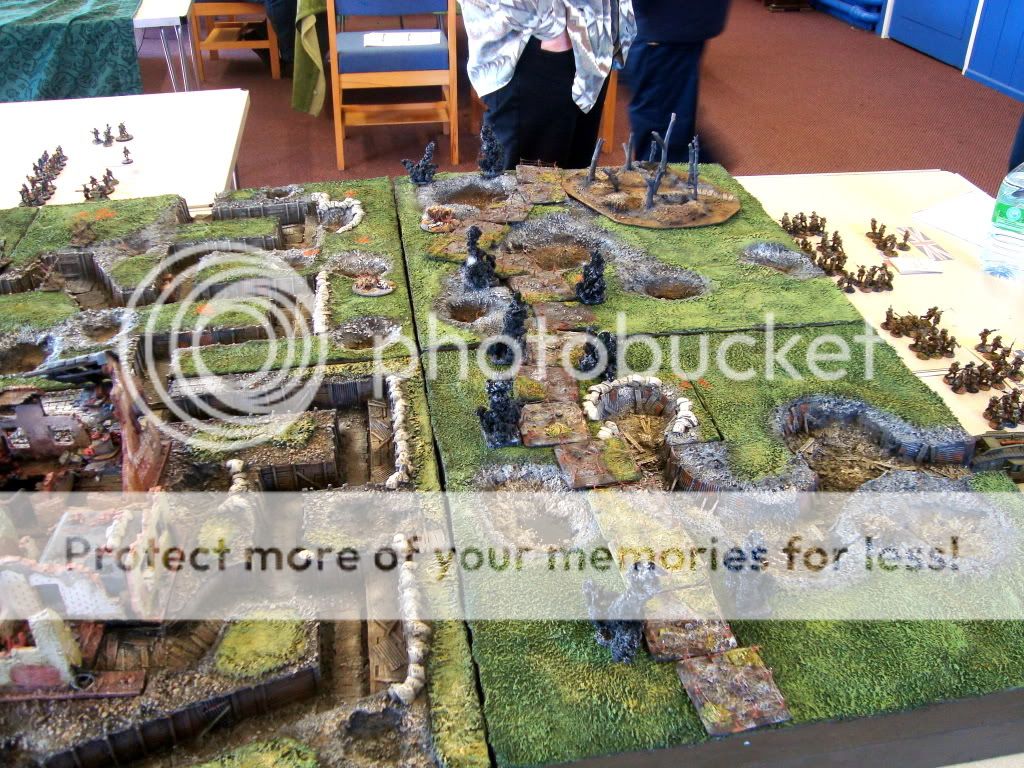
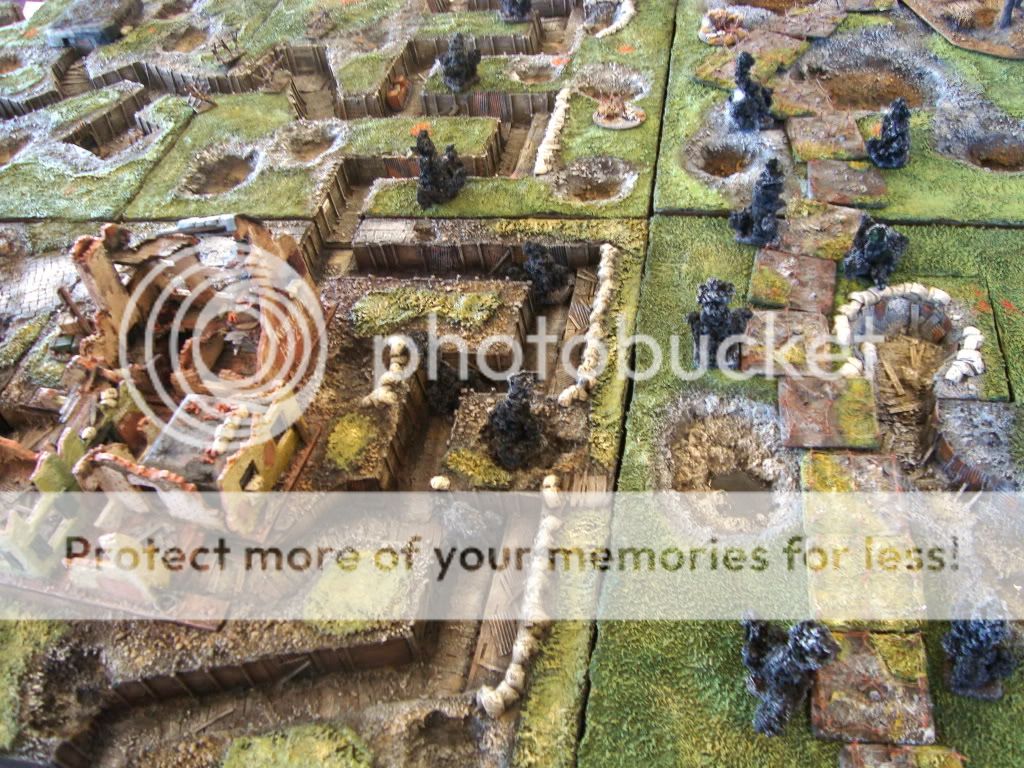
The British players were told that their forces were confident and trained, with reasonable morale, having being encouraged by the dramatic breakthrough of the
Siegfried Stellung on the first day of the battle. I also informed them that the German opposition had increased during the previous day, with German defenders tenaciously holding on to a series of defended villages and wooded areas. I passed both Craig and Mike a couple of the books I mentioned above to let them get a feel for the terrain and the actual villages which featured in the battle and on which the game was being based.
The defending German player, Simon, was given a platoon of
stellungsbattalion troops, with a reinforcing platoon of
stosstruppen following close behind. His
stellungsbattalion platoon was principally equipped with a maxim MG08 heavy machine gun with armour piercing ammunition, a sniper and two grenade throwing granatenwerfer 16s. His reinforcements were more potently supplied with two MG08/15 light machine gun teams, a couple of two-man
flammwerfers and a tank attacking gruppe of 7 men led by a Feldwebel and equipped with concentration charges for use against the British tanks in close quarter fighting.
Simon was also informed that his German forces were able to use a series of cellars running through the village, connecting the support trench with the Church and the buildings close to the front-line trench. I rationalised this by saying that the village had been prepared as a defensive position by the German pioneers when the
Siegfried Stellung was being constructed, although I don’t think that this happened historically as much in the villages around Cambrai as in some of the villages on the Somme.
All in all, the forces were an even match, I felt. I had thought about adding a 77mm field gun on the German side, but was worried that this might have unbalanced the scenario owing to the effect of such a field gun’s firing on British tanks under the “Mud and Blood” rules generally being fairly terminal once a hit is achieved.
The initial British bombardment damaged or destroyed much of the defensive wire and saturated the front line trench.
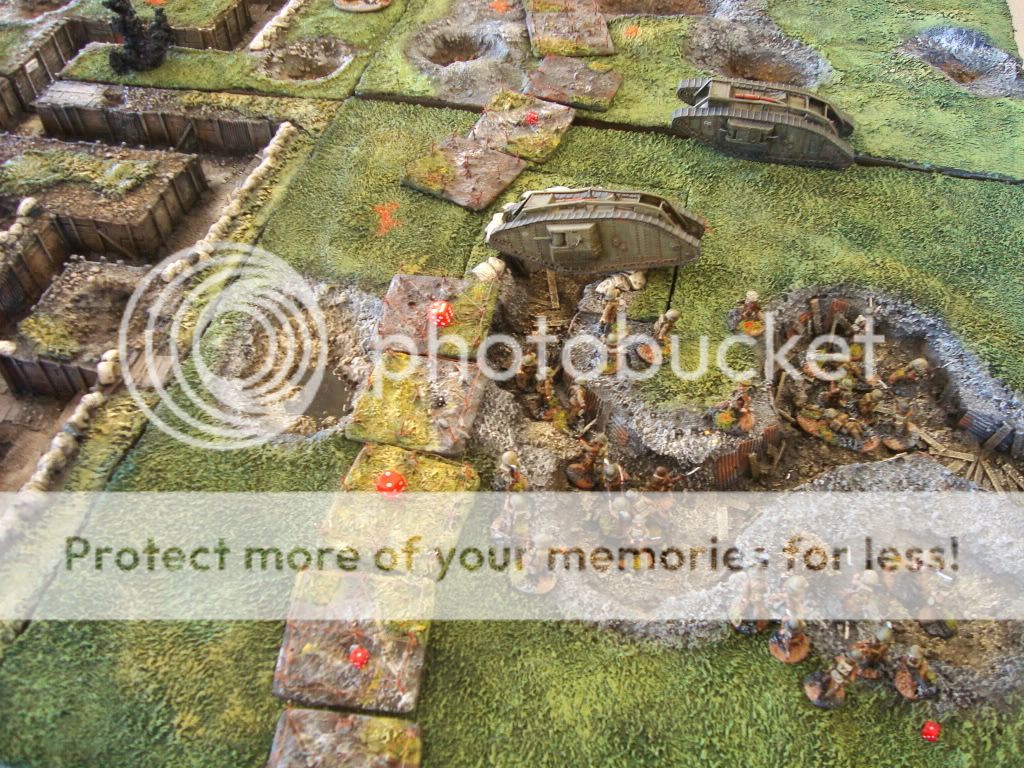

However, the Germans had already (as historically) evacuated the forward trench in anticipation of the barrage, preferring to make their stand in the cellars and shell-shattered remnants of the village. The German stellungsbattalion platoon held the British up for about 45 minutes of game time, doggedly defending the entrance to the village, fighting through damaged buildings and wrecked concrete bunkers.
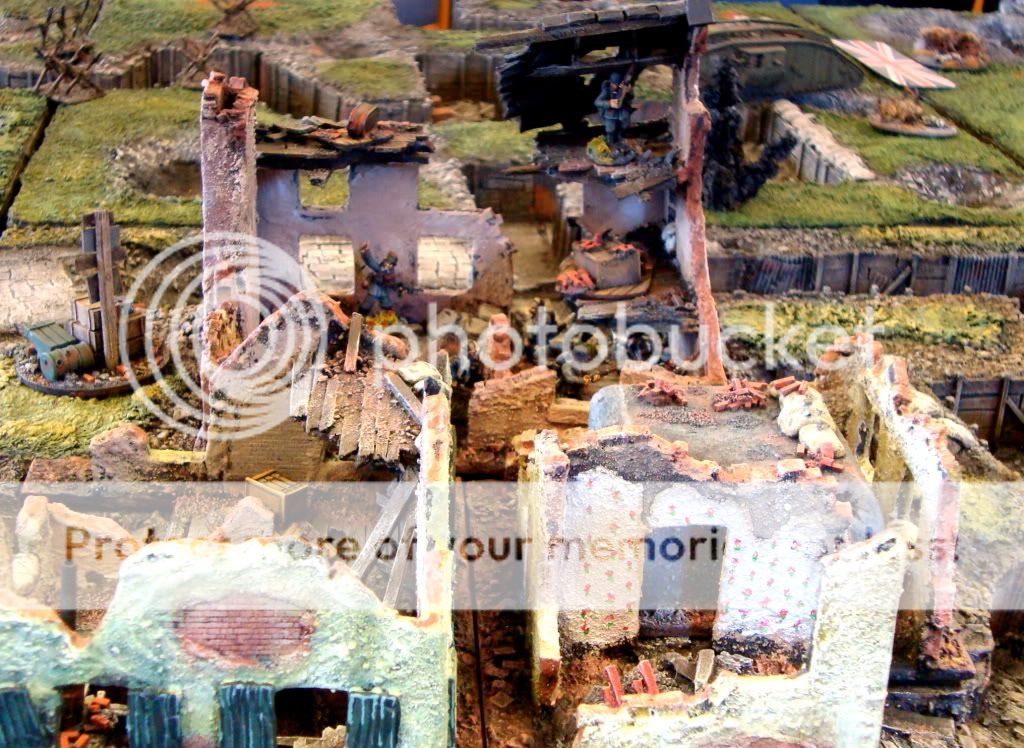
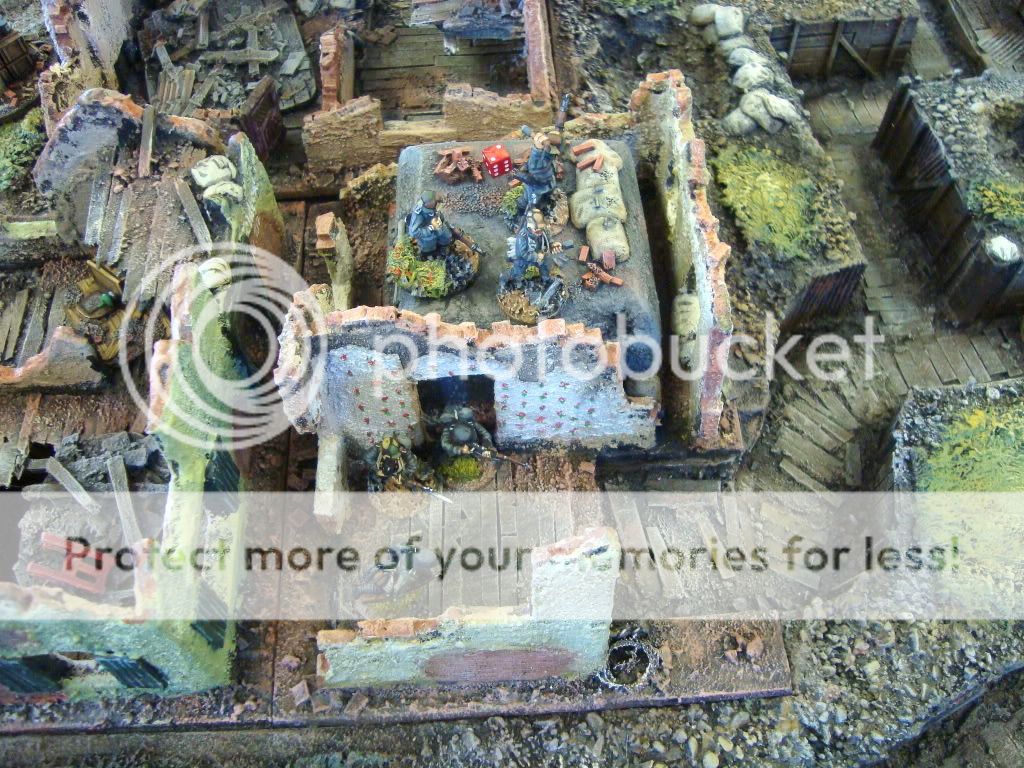
The two German grantenwerfer crews were also busy, peppering the British infantry with their 'flying pigeons' as they crossed the wire.

The Germans were assisted by one of the British tanks, '
Century', bogging down on crossing the front line trench, but not before until all three tanks had unleashed a hurricane of 6 pdr case shot on the same game turn against the foremost defended building, literally blasting the stellungsbattalion troops out of their fortified position.
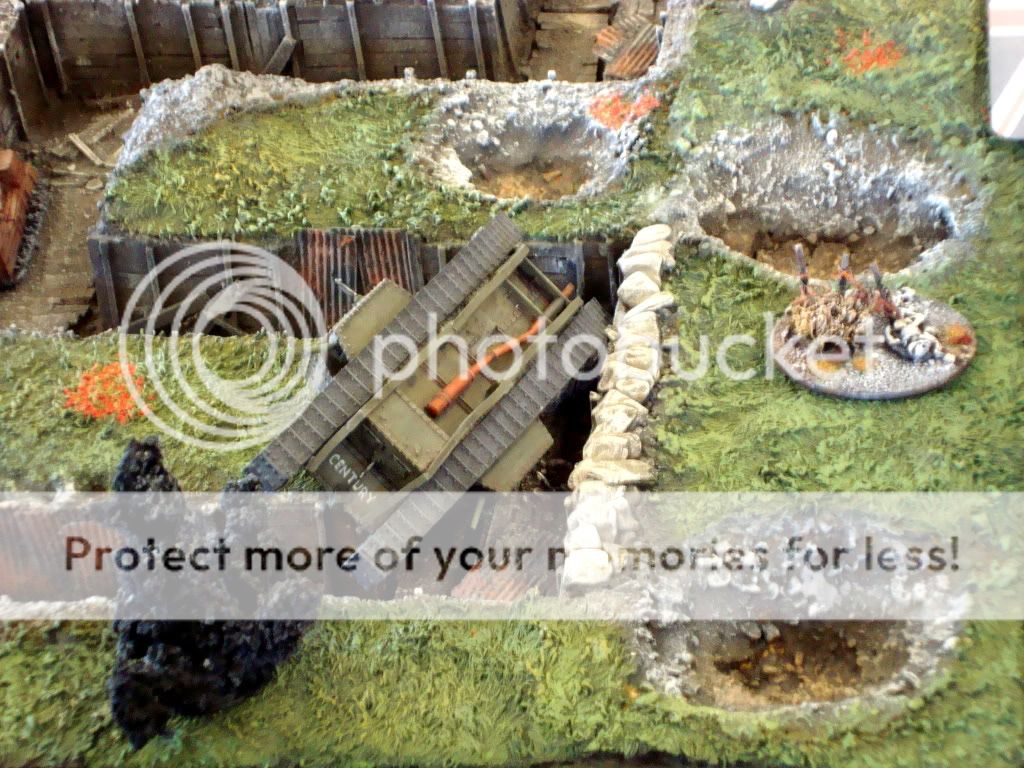
The same punishing treatment was handed out by the remaining British tanks to each strongpoint or building which they encountered, although the German defenders were extracting a heavy toll of the attacking British infantry.
By this time, German reinforcements had started seeping into the support trench, threatening to advance into the village and turn the British crawl into a stalemate.
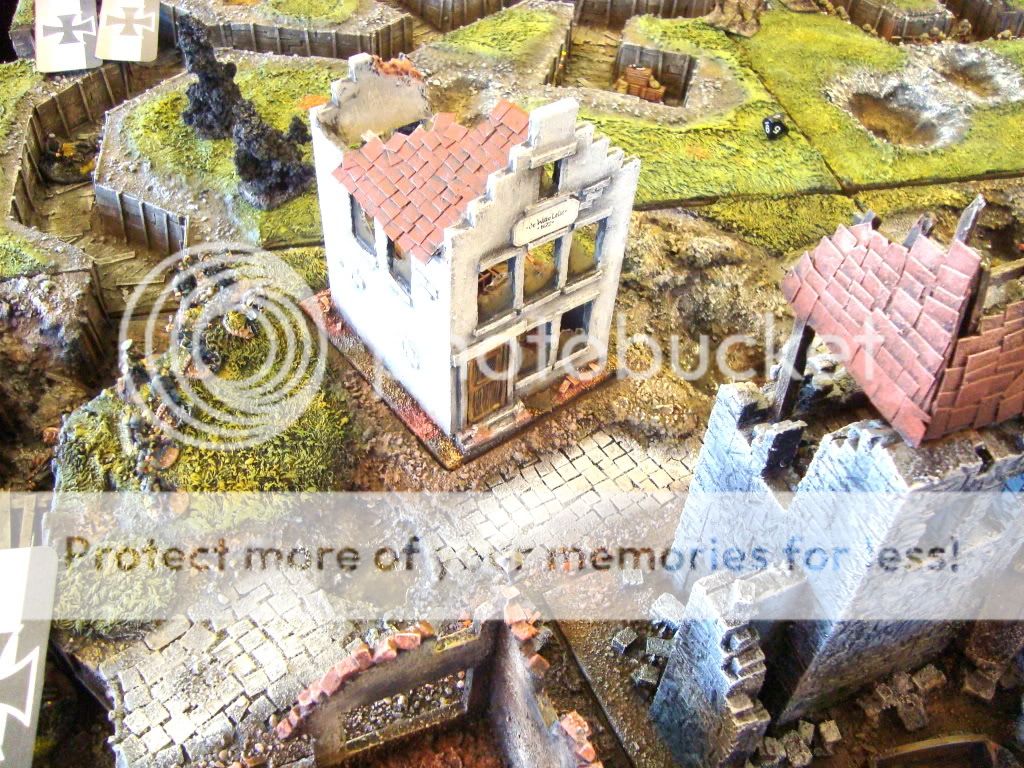
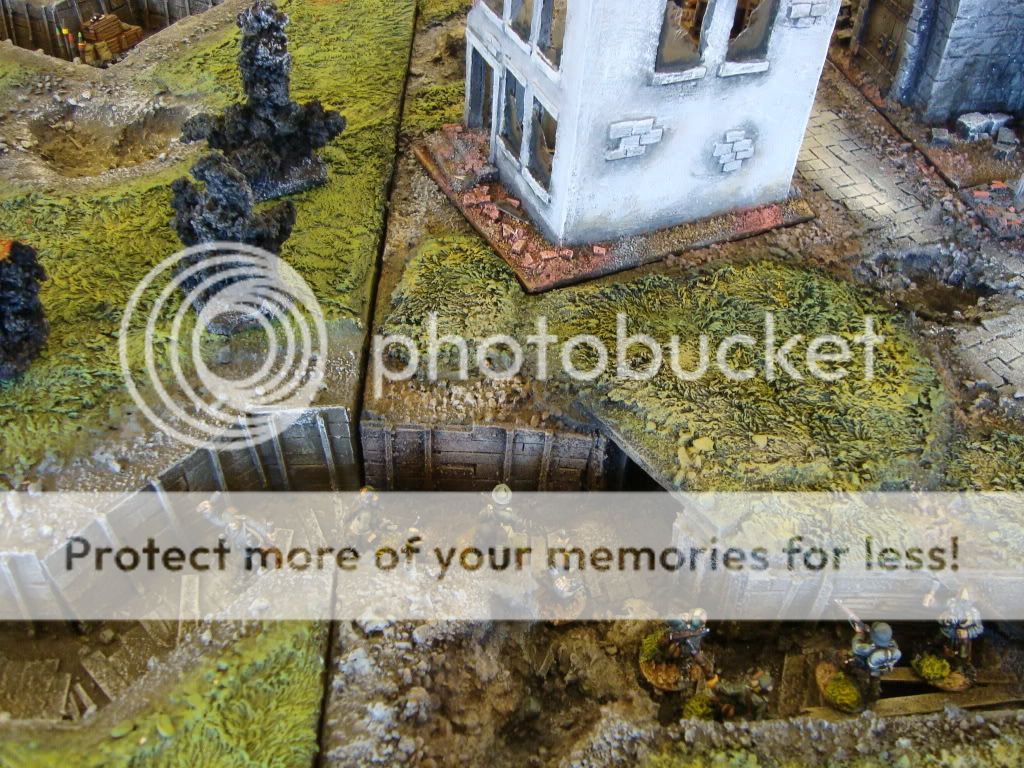
Seeing this, the British players concentrated all their efforts on outflanking the village and pressing urgently down a communications trench to break the flow of enemy reinforcements. A vicious fire-fight ensued in the trenches outside the village, in which the greater British firepower triumphed, driving the first arriving of the
stosstruppen gruppe back by sheer weight of fire.
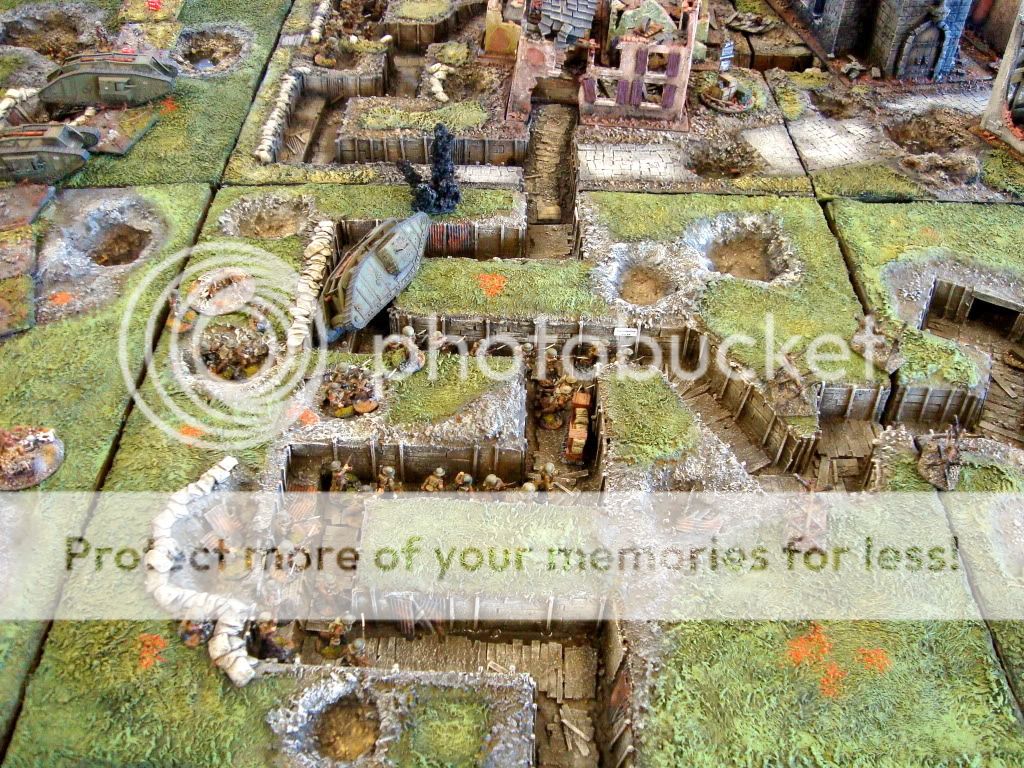
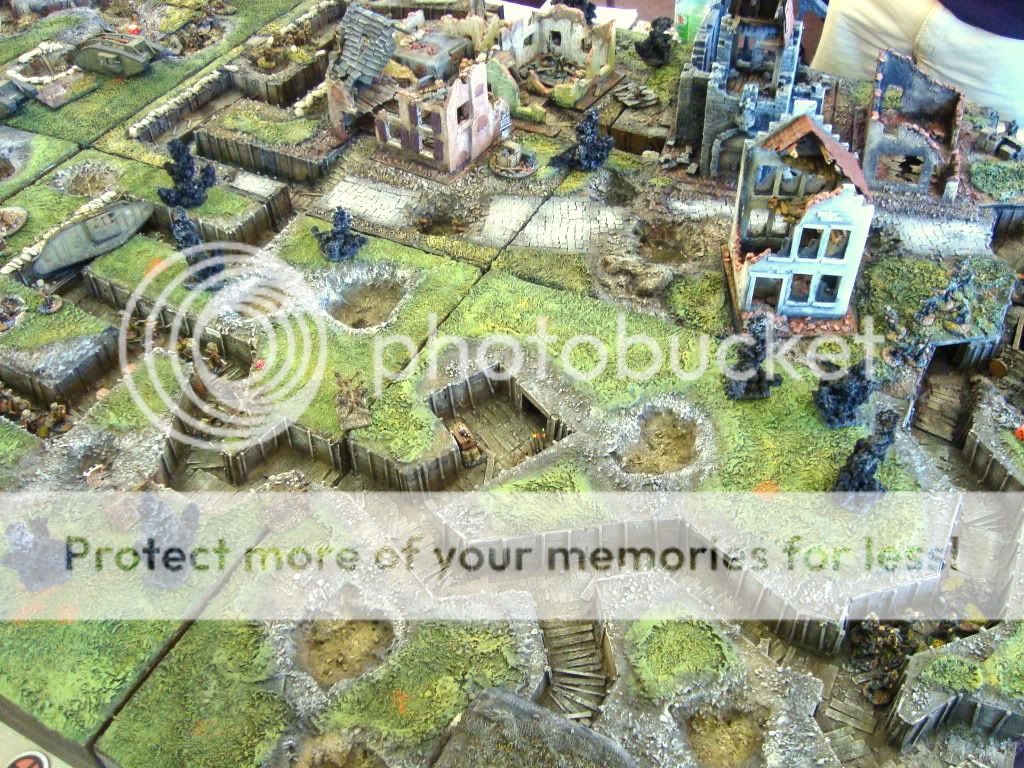

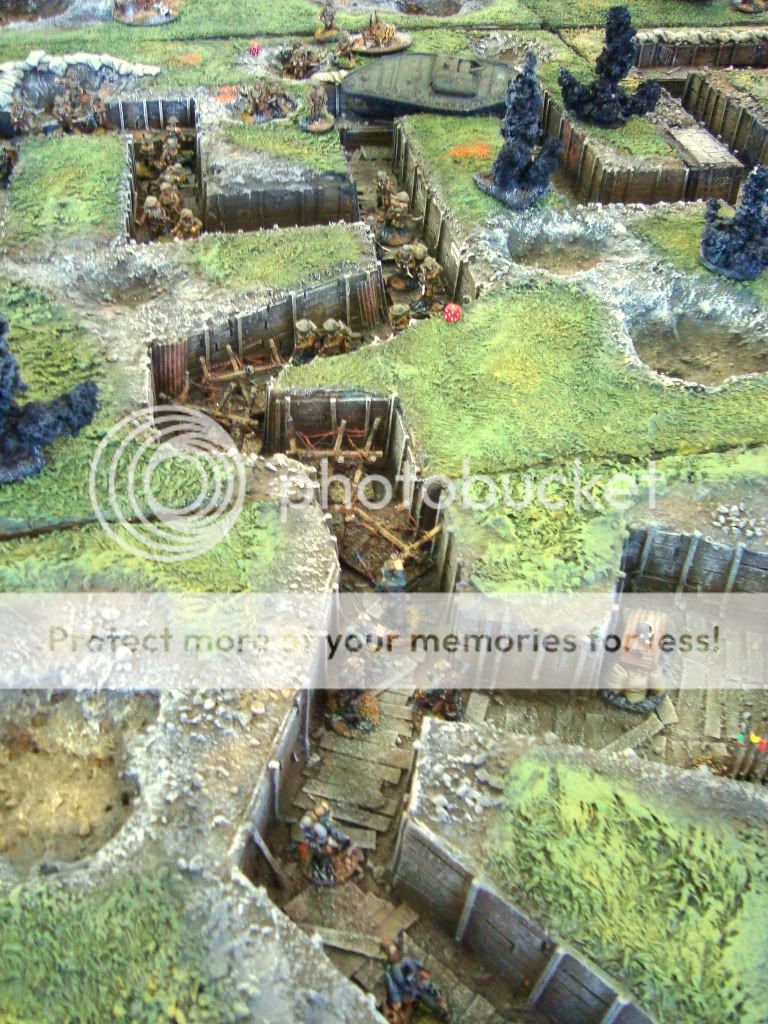
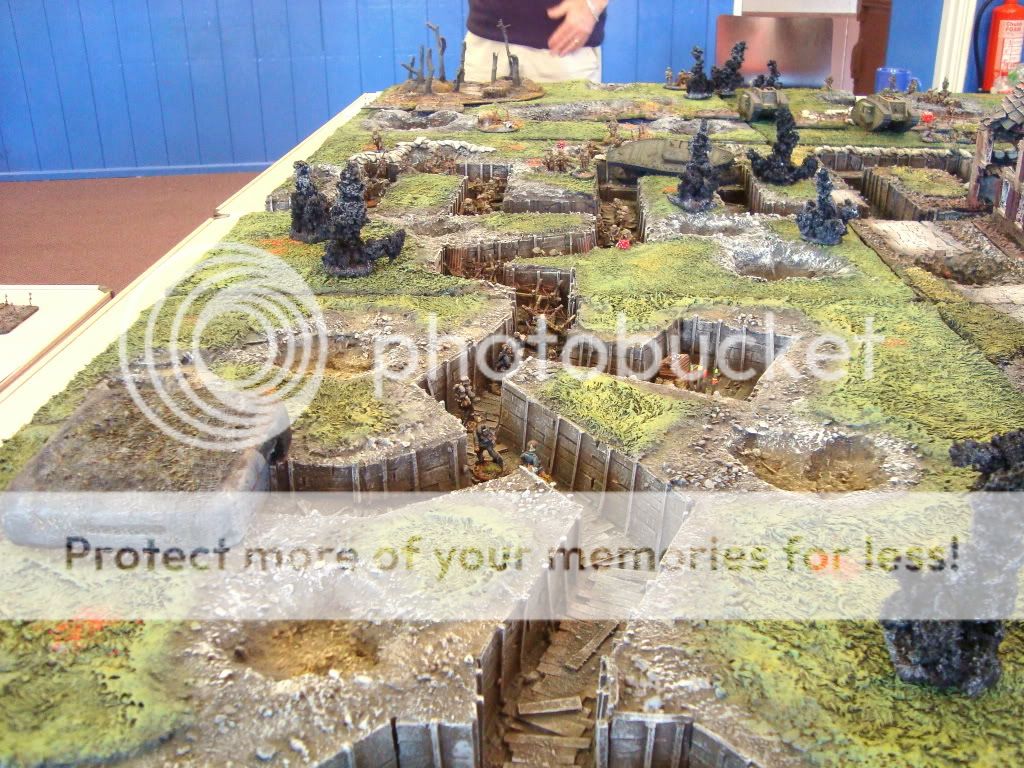
Although more Germans were steadily pushing into the village, including the tank hunting gruppe and the
flammwerfers, the British tanks continued to put down a withering close quarter fire on the German defensive positions, the Lewis guns of the Female tank being particularly effective. This was perhaps slightly unhistorical, as the tanks of “B” Battalion of the Tank Corps mentioned at Fontaine on 23 November that the Lewis guns of both Male and Female tanks were particularly vulnerable to damage from armour-piercing rounds in close quarter fighting. British forward observers who had advanced with a field telephone to a shell-pocked copse near the front line trench were able to call in an additional British bombardment to box off the support line trench running to the rear of the village from more of the advancing German
stosstruppen and further threatened to dislocate the defenders’ already battle-ragged communications.


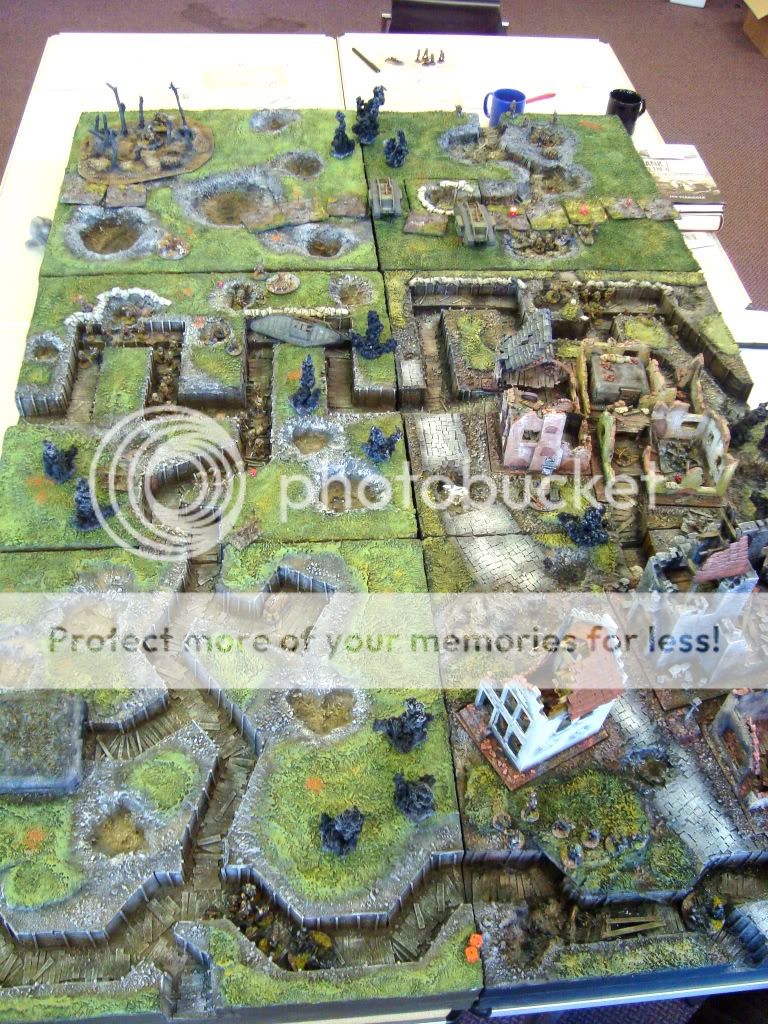
With the British threatening to outflank the entire German position, the German commander withdrew his forces swiftly using the communication tunnels which had been prepared through the village. Bloodied, but not broken, the British forces were left in possession of the village.
DebriefingThe game was certainly close and exciting, being played in a great spirit by all three players, and was a really enjoyable umpiring experience. The game took about three hours to play to a conclusion.
The ruleset we used , “Through the Mud and the Blood” from TooFatLardies, was easily able to deal with a fairly complex game with initial artillery barrages, tanks, infantry reinforcements, heavier weapons and outflanking manoeuvres. The “Through the Mud and the Blood” rules are becoming a favourite of mine, and are the ruleset I mainly, indeed almost exclusively, use for wargaming the Great War. To me they seem to give a great game in a reasonable time while remaining a good simulation of the developing tactical complexity throughout the Great War (whether early or late).
At this point, I think it's only fair that I should declare an interest as Richard Clarke (the author of the rules) is a good friend of mine and wargames with me at the St Albans club. Like any ruleset, they possibly need a tweak here or there to accommodate local conditions (as above with the effectiveness of the Lewis guns in the early Mark IV tanks). However, I still think that the rules give a great game and would strongly recommend them to anyone interested in large scale skirmishes in the early 20th century.
How did the rules cope with the game sequences? As you might know, “Through the Mud and the Blood” uses a card activation sequences (as do all the TooFatLardies rulesets). Simon, the German player, certainly had the worse of the draw of the “Mud & Blood” cards, with a number of German reinforcements being delayed when their presence may have contributed to turning the game. This was slightly balanced, perhaps, by the British tanks getting a series of very opportune cards to move early in the game, allowing them to trundle up to and crush any remaining wire before the infantry had reached it. The later British advance was more infantry driven, and was fairly relentless, making me wonder if the composition of forces had perhaps slightly favoured the British forces from the outset. Next time, the gallant, if unromantic,
stellungsbattalionkämpfer will be getting a field gun!
